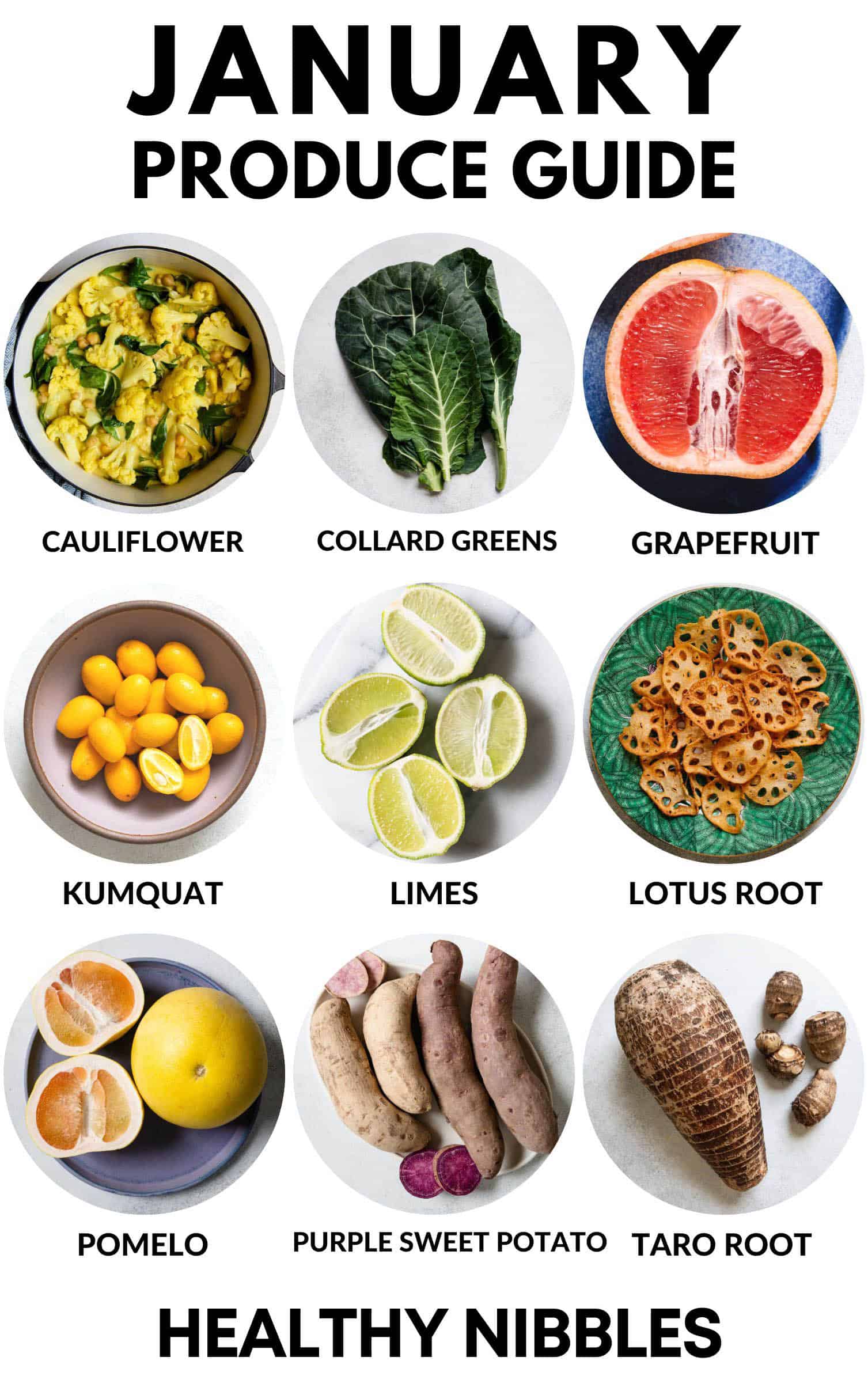
Written by Diann Leo-Omine & Lisa Lin, photos by Lisa Lin
Happy New Year! This January product guide is a little late this month as I’ve been busy moving into our new house! It’s been a few weeks of non-stop packing, cleaning and unpacking and I’m glad to have a moment to just sit down and get to work.
It’s been a pretty chilly winter here in Sacramento, but the cold has its rewards. Just in time for the Lunar New Year, it’s the season for grapefruit, lime, grapefruit, and other types of cheerful (and auspicious) citrus fruits. On the veg side, there are cruciferous and root root leafy greens to keep you on track to meet your New Year’s goals. stay warm
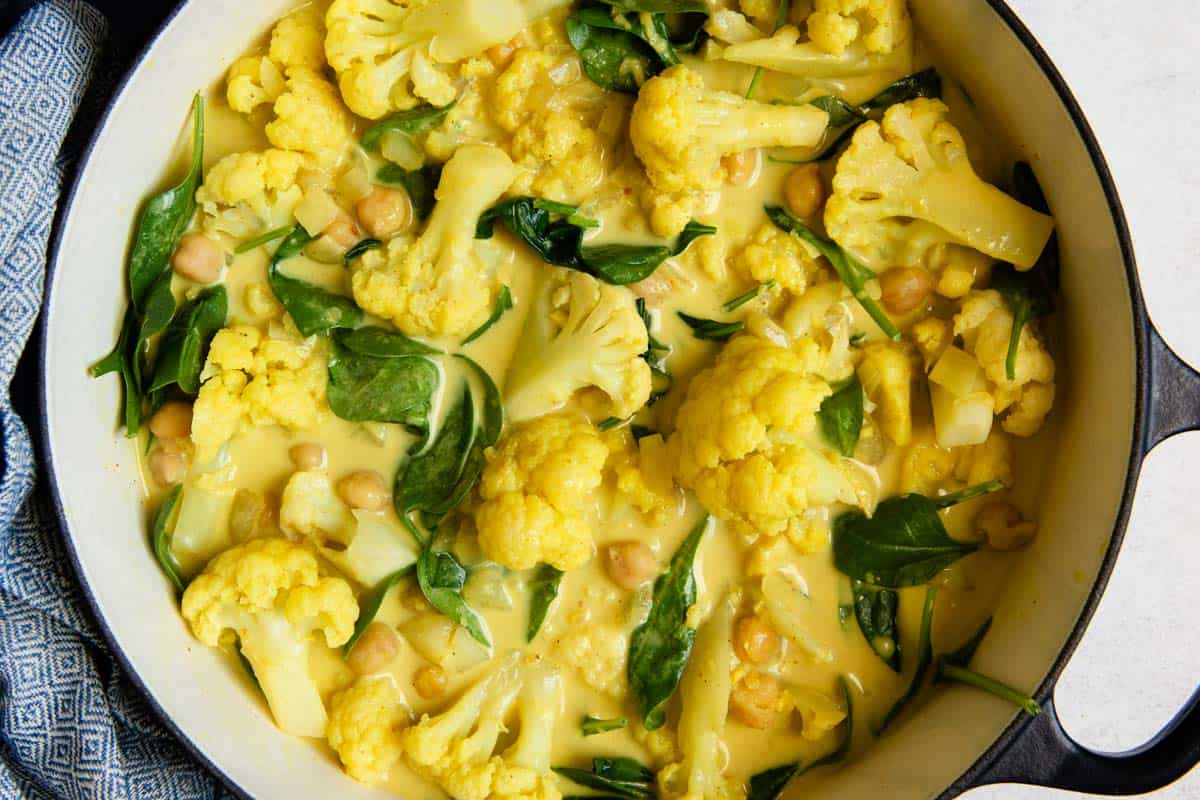
CAULIFLOWER
Cruciferous cauliflower is more than just a broccoli look-alike. Whether it’s the white, green, purple, or orange variety, cauliflower is high in folic acid and vitamins C, K, and B-6. In recent years, cauliflower has been popular as a substitute for rice, pizza crusts, or even polenta. Cauliflower tolerates cooking over high heat and develops a nutty flavor when roasted and browned.
HOW TO SELECT AND STORE CAULIFLOWER
Choose cauliflowers with a compact head and relatively even coloring. Store cauliflower in a plastic bag in the refrigerator for up to a couple of weeks.
RECIPES WITH CAULIFLOWER
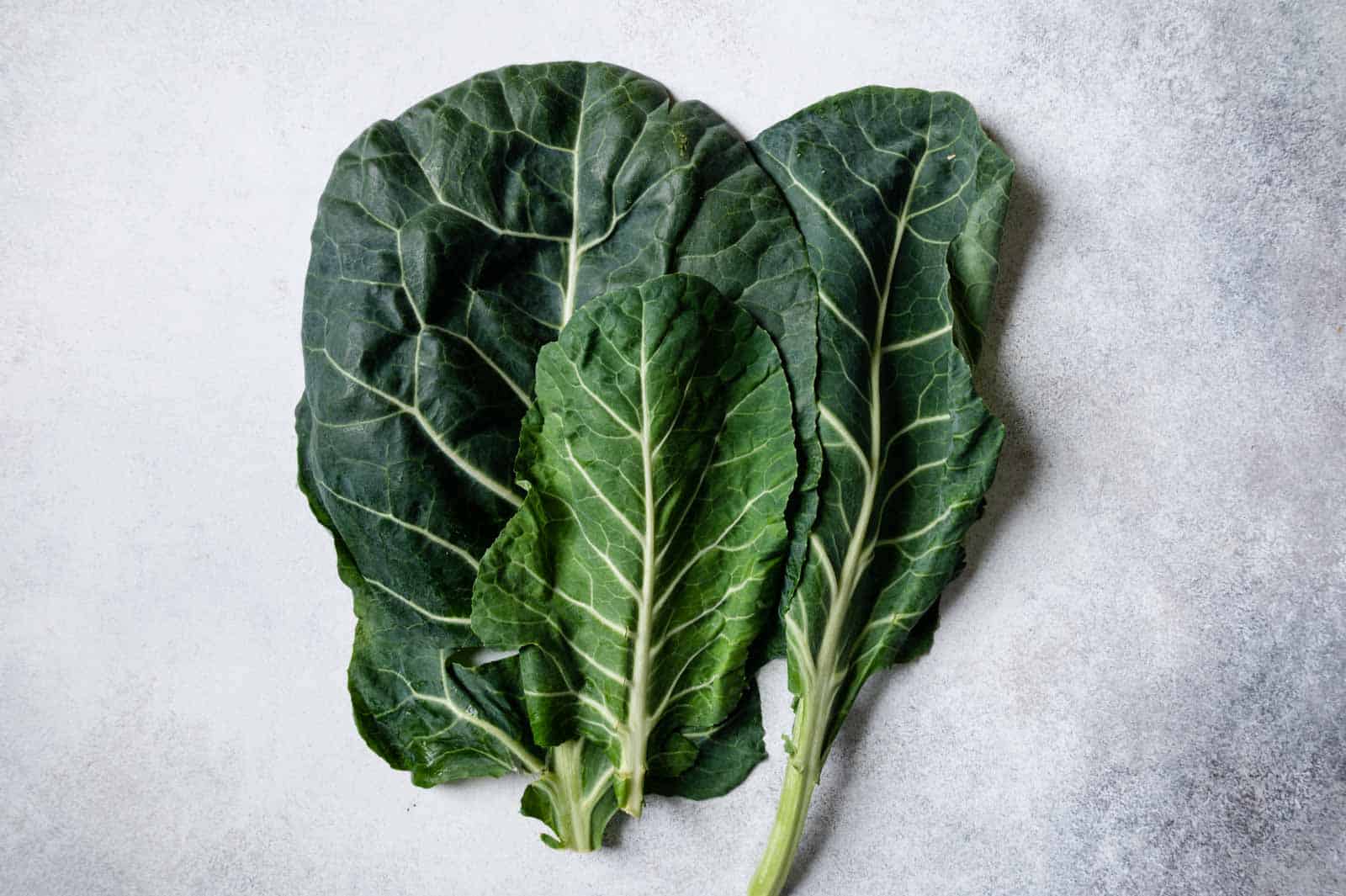
GREEN
Rich in vitamins and minerals, collards are impressively one of the best plant-based sources of calcium. A member of the Brassica family, it is related to kale, Brussels sprouts, and collards. You guessed it, it’s a bitter green, but it goes well with raw food or braising. Try kale green leaves as a wrap instead of a tortilla!
HOW TO CHOOSE AND STORE KALE GREEN
Choose kale that is light green and without holes or spots. The leaves should feel crisp. Collards can be stored in the refrigerator for up to a week.
RECIPES WITH HEAD GREEN
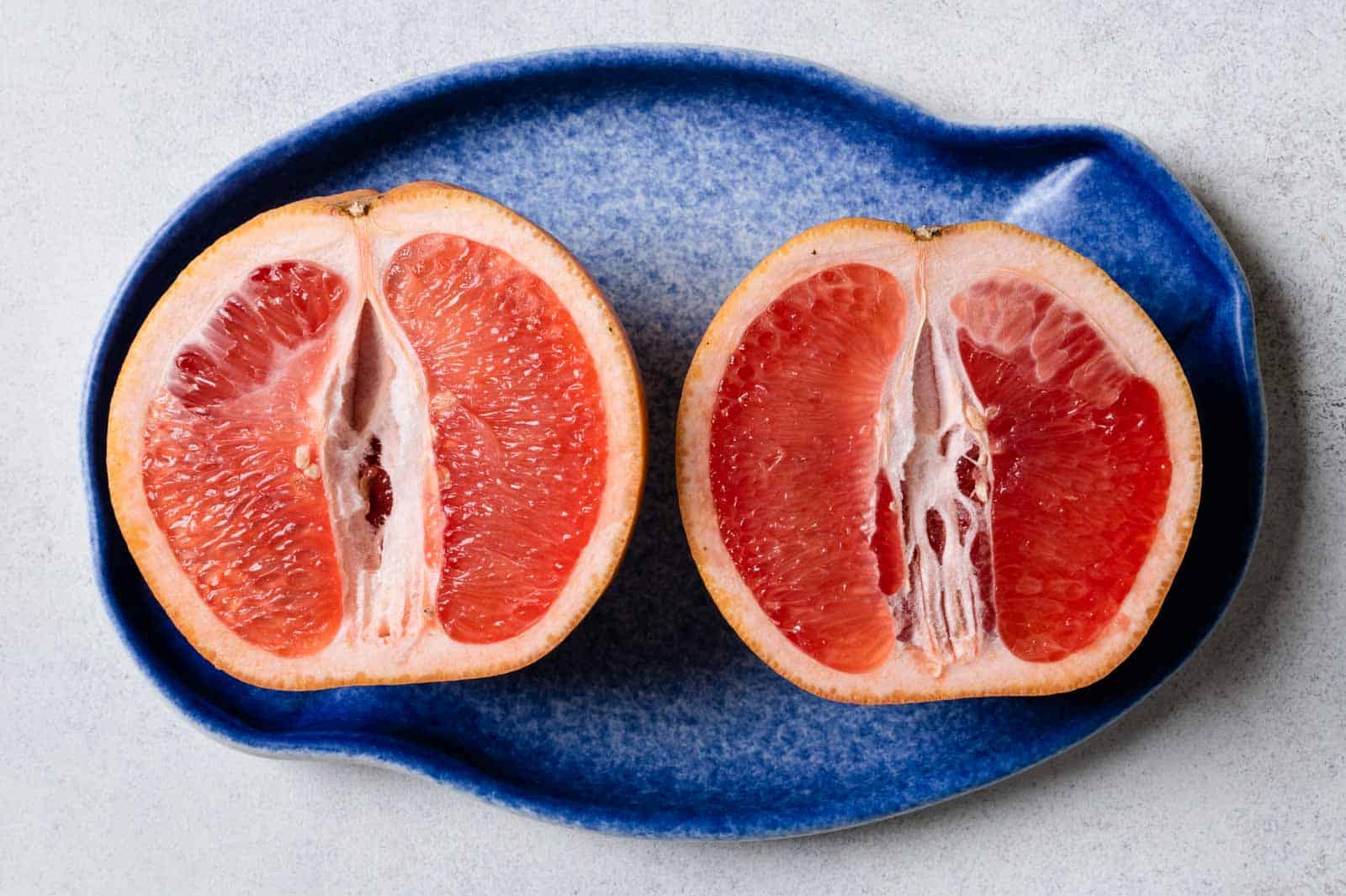
GRAPEFRUIT
Here’s some sunny news for those of you adding grapefruit to your breakfast routine: Just half a grapefruit can provide 75% of normal vitamin C needs. Ruby red, white or pink flesh, grapefruits are a treasure trove of colors on a cold winter day. Slightly tart and a little bitter, grapefruit goes well with bitter greens like rocket or frisee. You can even brulee a grapefruit for a fancy Sunday brunch vibe.
HOW TO SELECT AND STORE GRAPEFRUIT
Choose grapefruit that is smooth on the outside and free of mushy spots. Store grapefruit in the refrigerator and eat within a week. Don’t wait too long – grapefruit can spoil quickly, even in the fridge!
PAMPEFRUIT RECIPES
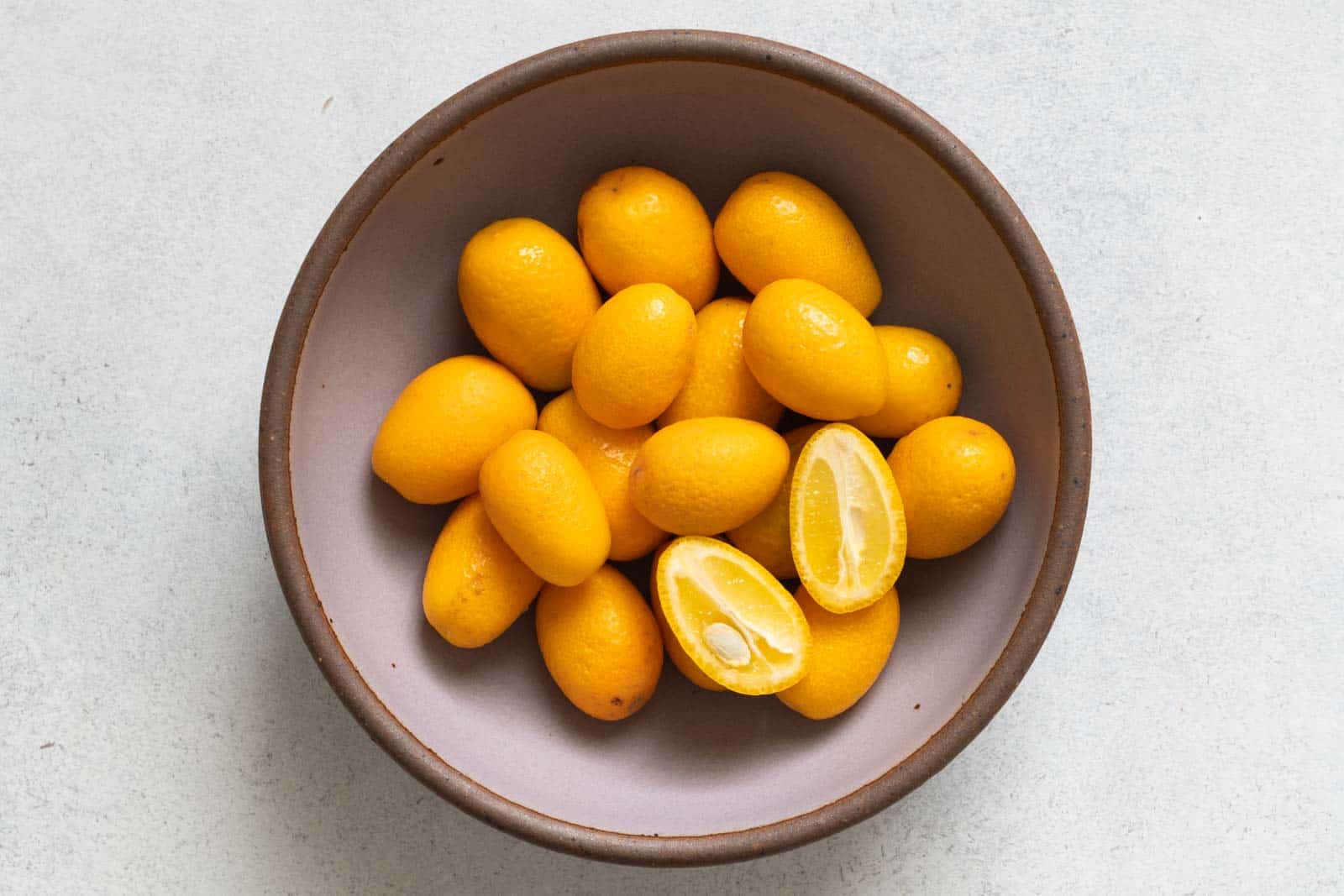
KUMQUAT
Grape-sized kumquats eat like citrus, but are actually in a separate genus (fortunella) than citrus fruits. Either way, these citrus fruits are fully edible and are most commonly cooked in a jam or thinly sliced and tossed in a salad. These mighty little fruits are great sources of vitamins C and A, calcium and other minerals.
HOW TO SELECT AND STORE KUMQUAT?
Choose kumquats that are evenly colored (avoid greens on the stems or those with soft damp spots). Kumquats can be stored in the fridge for a little over a week.
RECIPES WITH KUMQUAT
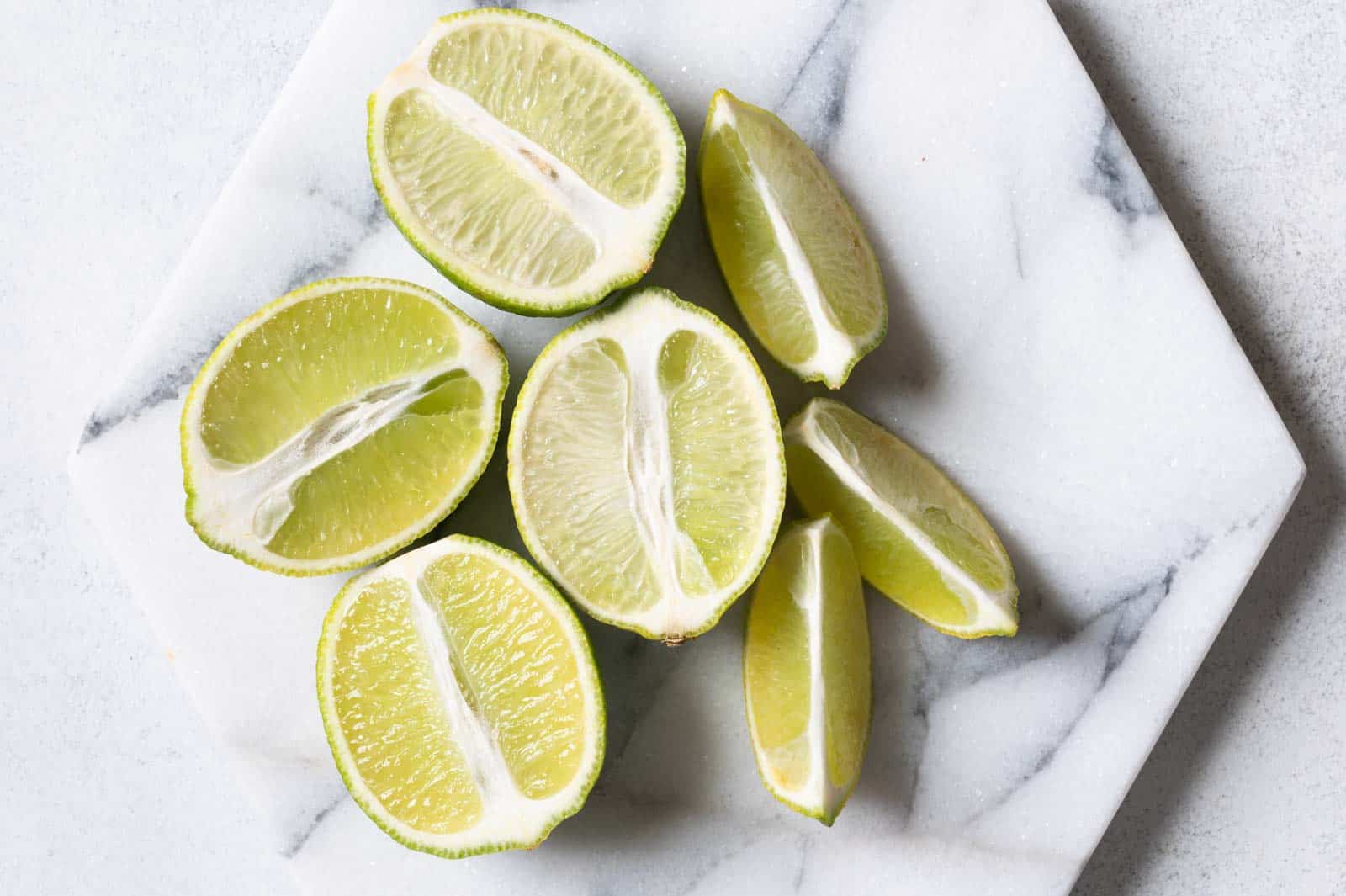
LEMONS
From decorating rice dishes to adding tropical sweetness to smoothies to forming the base of a sauce, limes are the little green citrus that could do it. Like other citrus fruits, limes are a great source of vitamin C. Persian limes are the most commonly found variety in stores, while Mexican limes (key limes) are smaller. A squeeze of lime juice or a squeeze of lime zest can really add pizzazz to a dressing or dip.
HOW LIMES ARE SELECTED AND STORED
Choose limes with a uniform appearance. They shouldn’t be rock hard, but will be heavy for their size. While you’re most likely to find deep green limes, the riper limes are actually a lighter, pale green-yellow color. Limes can be kept at room temperature or in the refrigerator for longer storage.
RECIPES WITH LIMES
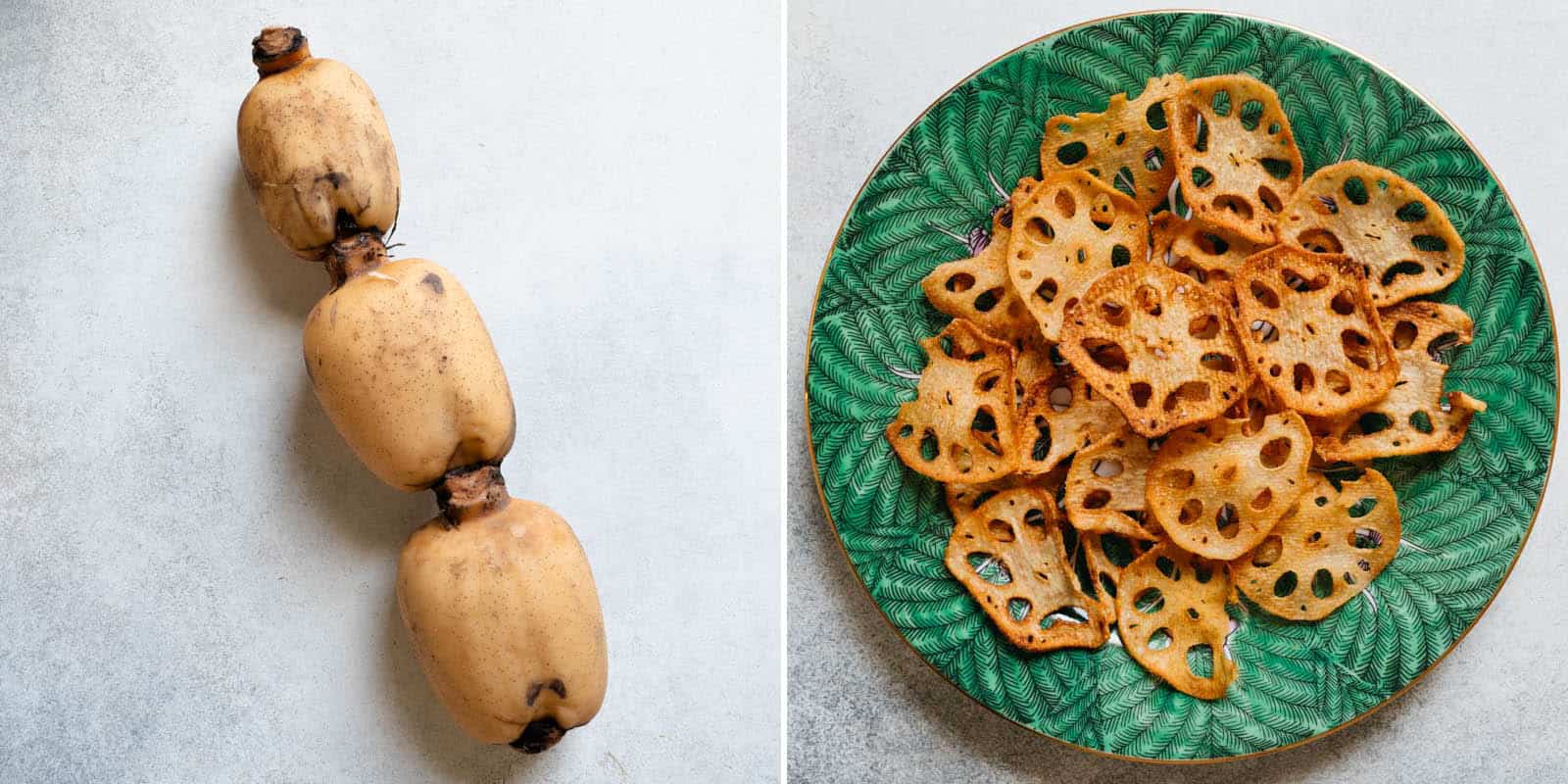
LOTUS ROOT
Starchy, crunchy lotus root is a rhizome that grows underwater. Lotus root is rich in fiber, vitamins and minerals. Like an apple, peeled lotus root can oxidize quickly, so hold the sliced lotus root in water with a squeeze of lemon in it. The lotus root is ideal for stir-fries or soups and is considered a cooling food in traditional Chinese medicine. The lotus root (and its seeds) symbolize abundance and often has a place in the tray of togetherness, the hodgepodge of sweets put together for Chinese New Year.
HOW TO SELECT AND STORE LOTUS ROOT?
Choose lotus roots that don’t have large black or gray spots – these are signs that the lotus root is going bad. Whole lotus roots can be stored in plastic wrap in the refrigerator for about 1 to 2 weeks. Peeled and cut lotus roots can be kept refrigerated in a container of water for a few days.
RECIPES WITH LOTUS ROOT
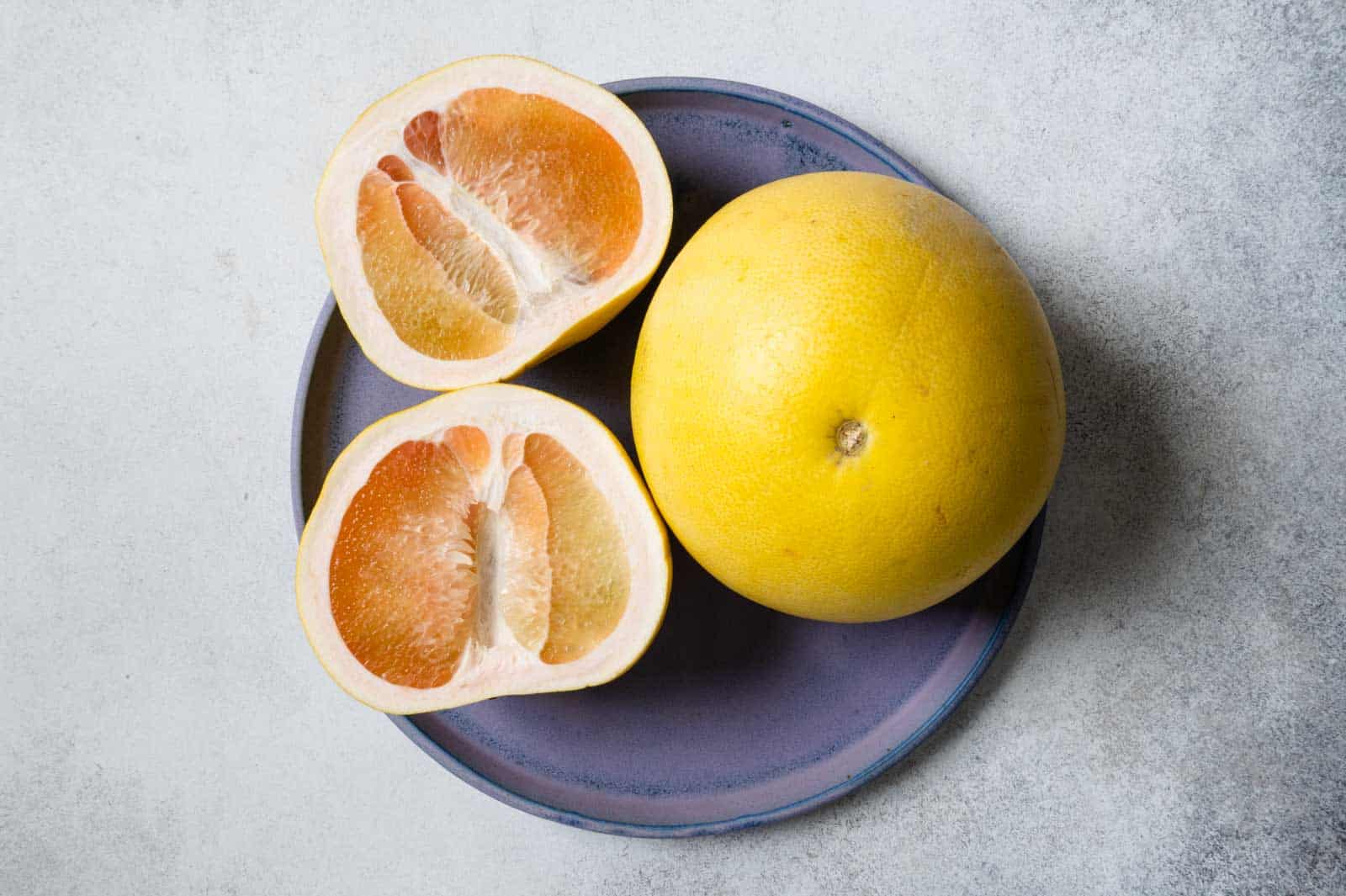
POMELO
Hold the pale yellow pomelo with both hands, this citrus fruit is larger than life. Oversized grapefruit kick-starts the vitamin C even more than the aforementioned grapefruit — 130% of your daily vitamin C needs can be met with just a quarter of this powerful citrus fruit. Inside, the green or pink flesh is hidden by a thick but easily discarded pith. Like most citrus fruits, the grapefruit is considered an auspicious fruit for the Chinese New Year.
HOW TO SELECT AND STORE POMELO
Choose grapefruits that are uniform in color and appearance. Store at room temperature until . Like the grapefruit, pomelo goes bad quickly!
RECIPES WITH POMELO
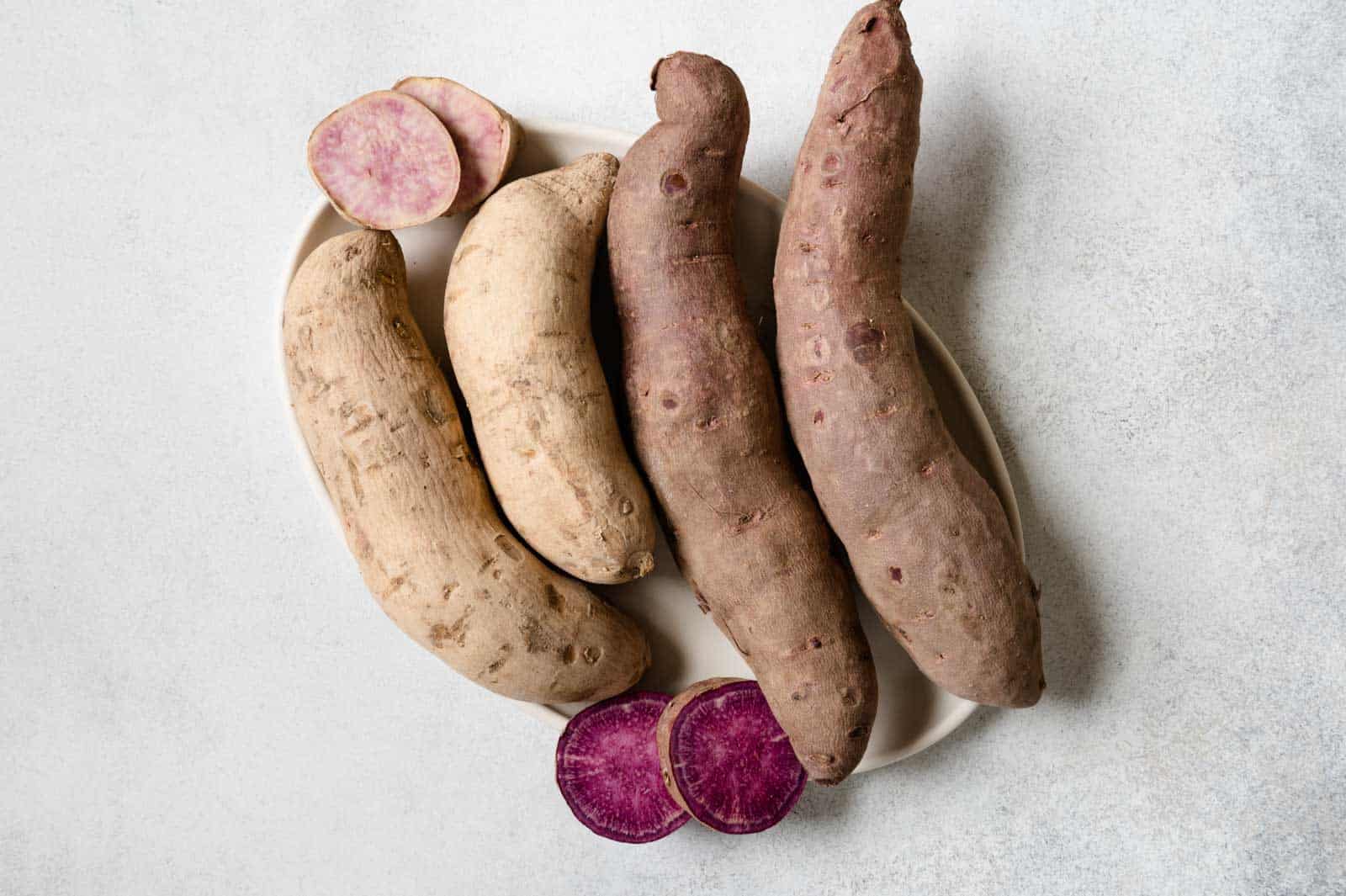
PURPLE SWEET POTATO
Often confused with taro and ube, there are many cultivars of this purple sweet potato, which belongs to the morning glory family. While the skin can be white or dull purple, the inner flesh is purple. Some strains are more vibrant on the inside than others. The vibrant flesh is as nutritious as its color, packed with antioxidants. Purple sweet potatoes tend to be drier and more starchy, but have a richer flavor. This sweet potato can be used in both sweet and savory recipes. Serious Eats has an in-depth guide to the different types of sweet potatoes.
HOW TO CHOOSE AND STORE PURPLE SWEET POTATOES
Choose purple yams with minimal eyes and bruising. It’s okay if there are still a few rooty strands left. Purple sweet potatoes can be stored in a cool, dry, dark place for up to a couple of weeks.
PURPLE SWEET POTATO RECIPES
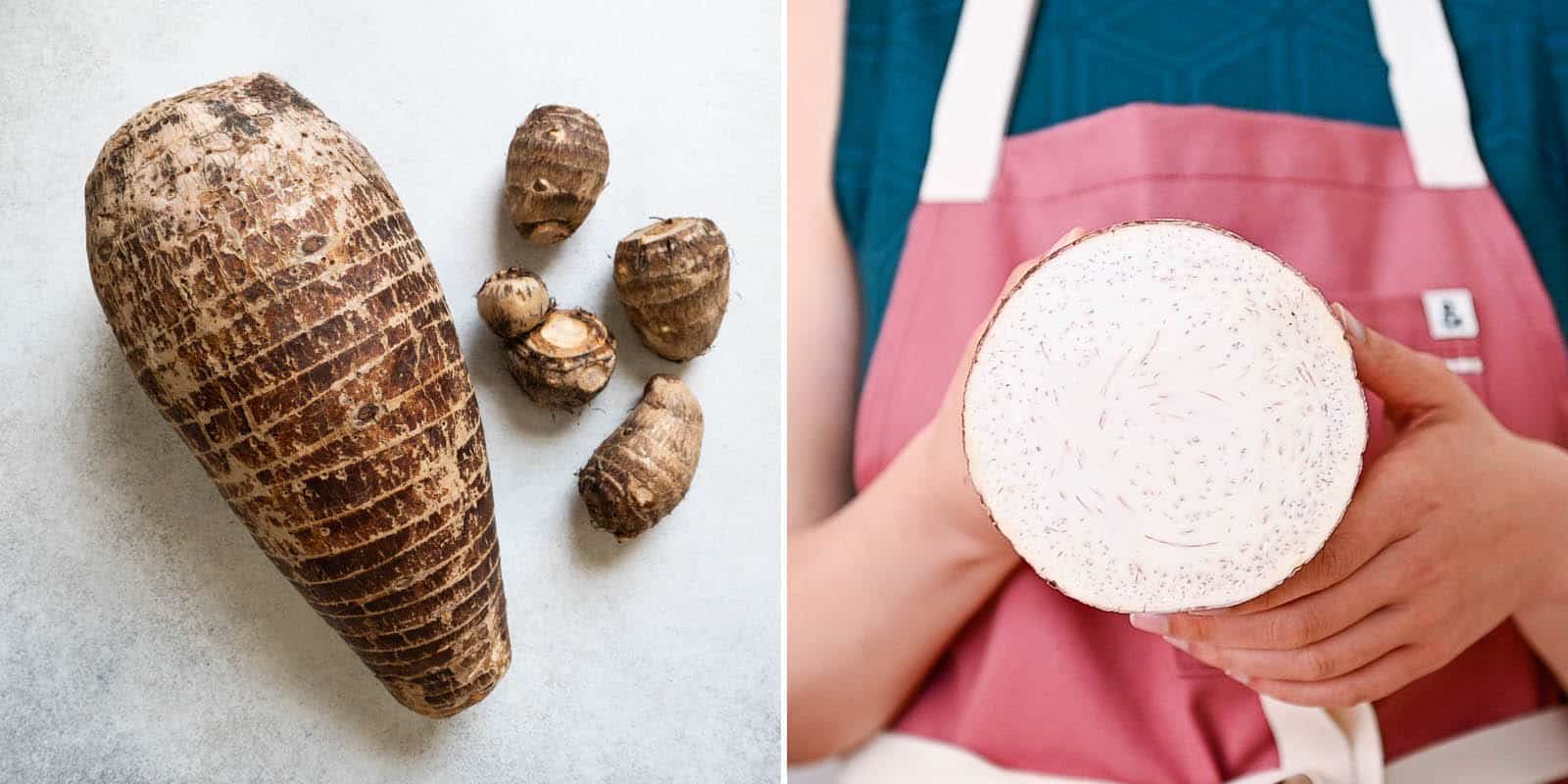
TARO ROOT
In Chinese cuisine, the nutty taro root is found in both savory and sweet recipes. On the savory side, taro root is used in Mama Lin’s sticky rice and steamed taro cake (芋頭糕, 芋頭糍) recipes. On the sweet side, taro root is a popular bubble tea flavor and can also be sliced and diced for a nutritious hot dessert soup. Mama Lin taught me how to choose the best taro root – I never thought it could be so complicated!
What is the difference between the large taro root and the small taro root? In Mama Lin’s words, the larger taro root tends to be powderier-softer in texture and more fragrant in flavor. I tend to cook with this big taro root. The smaller taro is smoother but more slimy and moist, like okra. But don’t write off the little taro root — this little taro is fantastic steamed or boiled and dipped in soy sauce.
Note that taro cannot be eaten raw due to the toxin calcium oxalate. Don’t worry, this poison will be removed during cooking!
HOW TO SELECT AND STORE TARO ROOT
Choose a large taro root with dense lines (indicating it’s grown longer) and more red veins inside. Contrary to the general recommendation to pick hard fruits and vegetables for their size, try to choose taro root, which is lighter. Store in a plastic bag in the refrigerator for up to a week or two.

